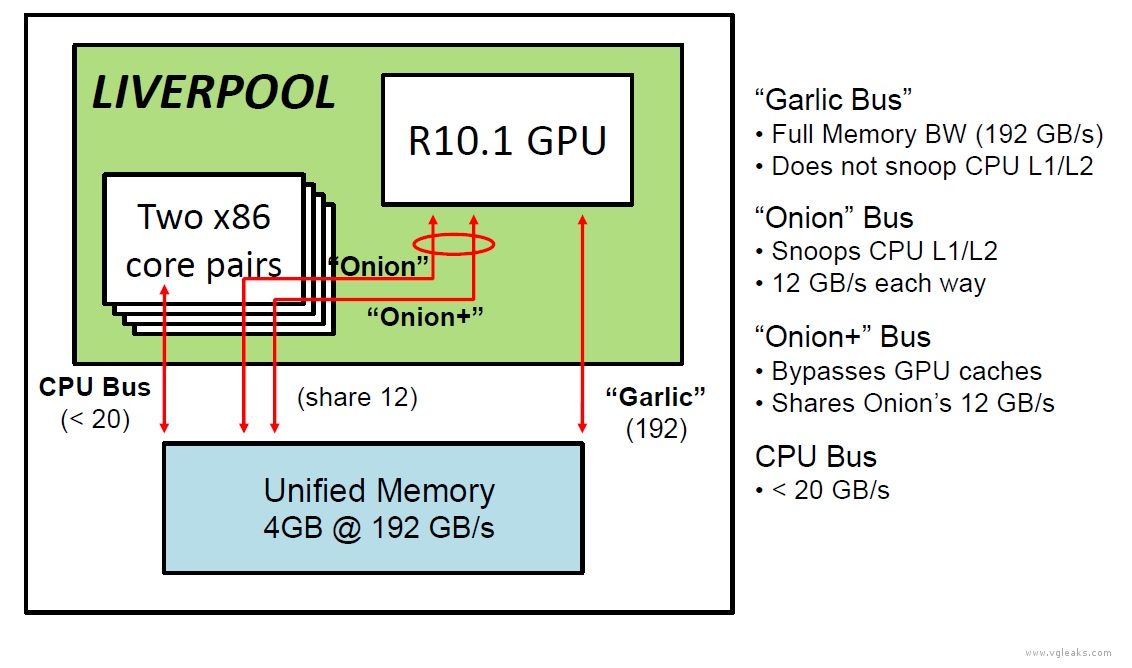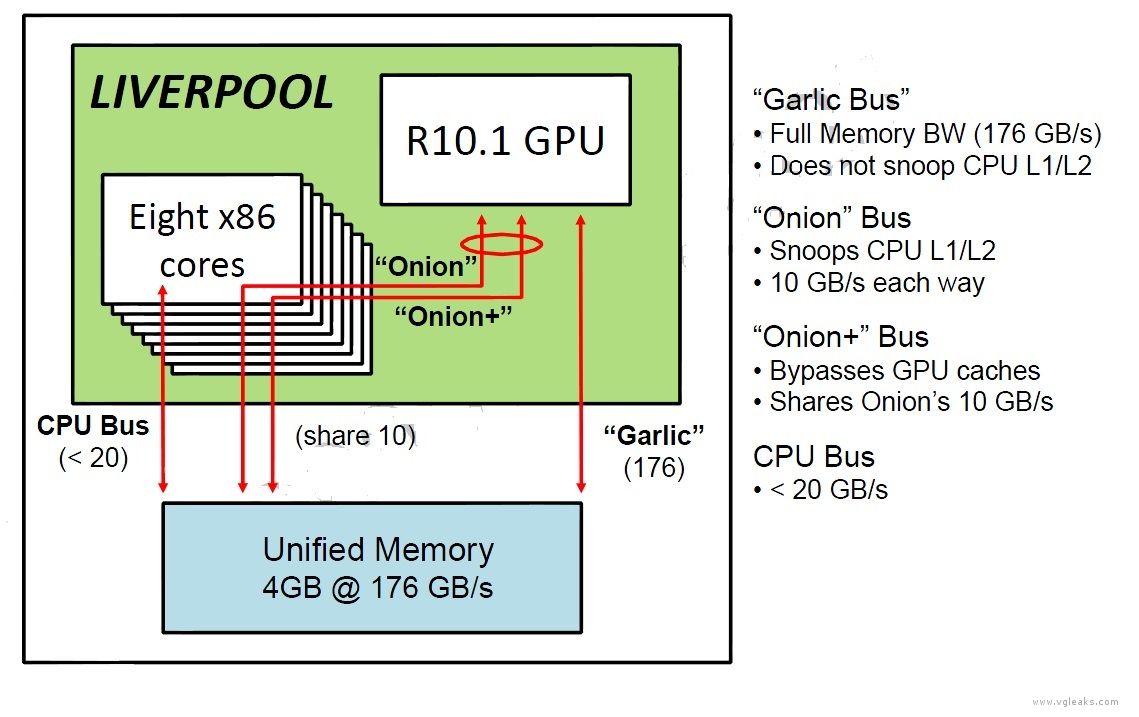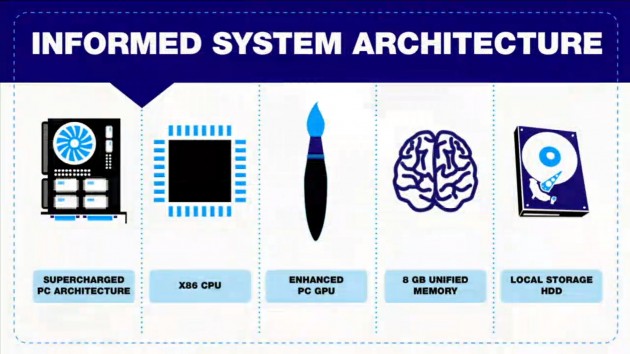Many people thought that PS4 constantly changed its architecture, but this is not true at all. In this article we will see 2 “pictures” of Playstation 4 and how it has evolved over the time. We are going to see that not all the components and speeds in the system are better than before.
The first picture shows the system at mid 2011 (almost 2 years from now):

You can easily see some differences between this diagram and the final system shown the last month:
– 2 x86 core pairs (in this case the system would mount steamroller cpus)
– 4 GB instead of 8 GB
– RAM bandwith is set to 192 GB/s
Additionally you can see the system’s buses:
– “Garlic” bus between GPU and Memory (192 GB/s)
– “Onion” buses between GPU and Memory through CPU (12 GB/s shared)
– CPU bus between CPU and Memory (less than 20 GB/s)
The second picture (early 2013) shows the evolution in PS4:

There are 2 main differences:
– The 4 cores have been “upgraded” to 8 cores (this time as we know they are Jaguar cores instead Steamroller)
– RAM amount is still the same (4 GB, this change is very recent)
– Almost all the speeds are “downgraded”.
So now we have:
– “Garlic” bus between GPU and Memory (176 GB/s)
– “Onion” buses between GPU and Memory through CPU (10 GB/s shared)
– CPU bus between CPU and Memory (less than 20 GB/s). The only one apparently untouched.
As you can see, not all the changes in PS4 are made to improve the system performance. Major changes are the type of CPU and mostly the RAM amount in the system.



![[Rumor] Mario, Zelda and Pokemon games on NX’s line up](https://vgleaks.com/wp-content/uploads/2016/08/best-nintendo-game-xl.jpg)






![[Rumor] Sony in early talks to bring Helldivers 2 to Xbox](https://vgleaks.com/wp-content/uploads/2024/04/helldivers-2-150x150.jpg)

![[Rumor] Assassin’s Creed Hexe: Witchcraft, witch hunts and Fear System will be present in the new title of the saga](https://vgleaks.com/wp-content/uploads/2024/04/ac_hexe-150x150.jpg)





